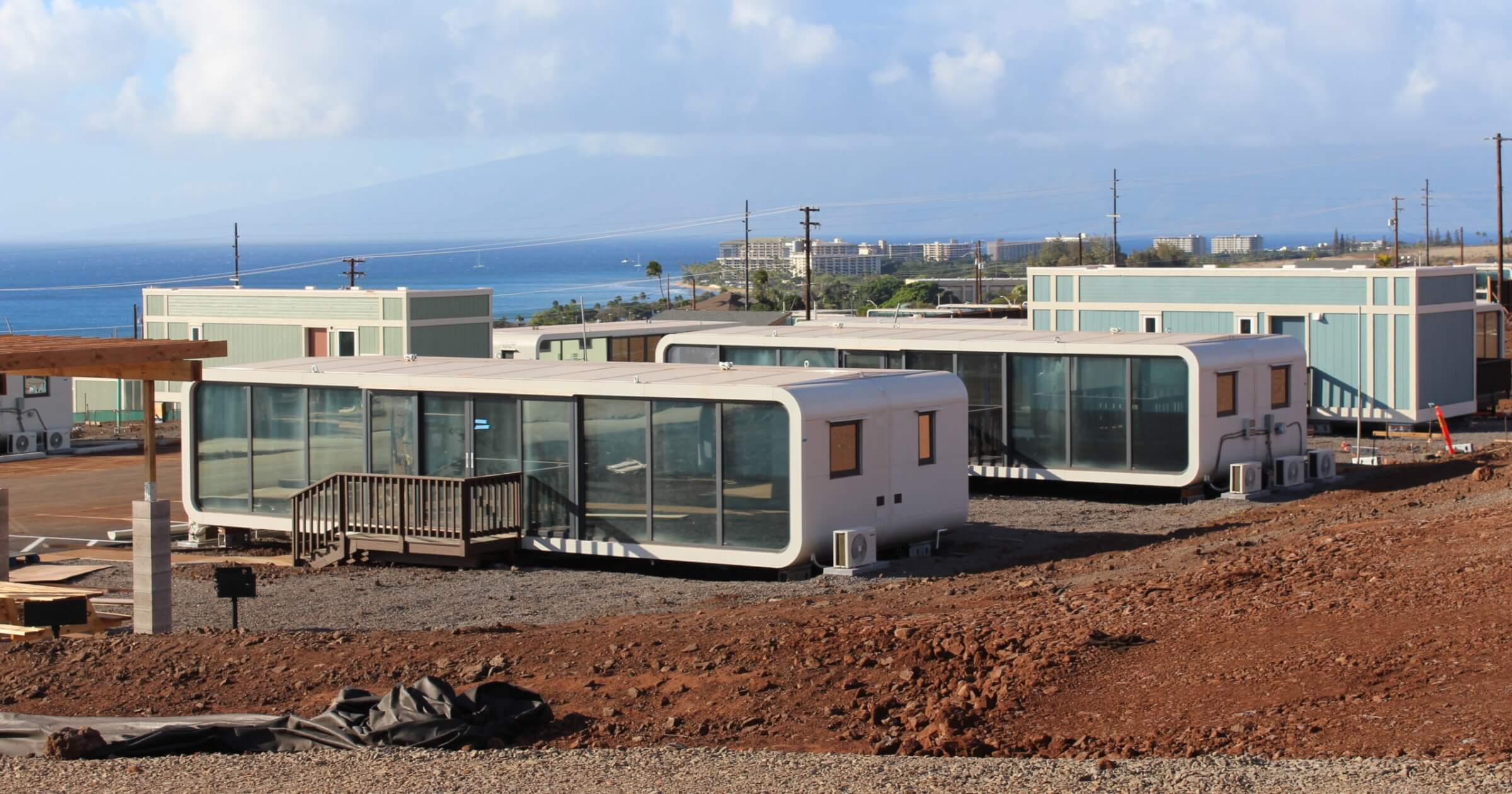This Maui neighbourhood was built under 100 days after the wildfires in 2023. Photo courtesy of https://www.mauinews.com/
As climate change triggers new weather disasters worldwide, many areas are reassessing their relief efforts. A major area of concern among these initiatives is the issue of home rebuilding. Modular and prefabricated homes are alleviating stress during disaster relief—they are quick to manufacture, cheaper to make, and more affordable for those waiting on lengthy home insurance policies. In this article, we’ll dig into how modular and prefab homes support disaster relief efforts.
Where modular housing and pre-fab solutions have already swooped in
Use of modular construction for disaster relief isn’t an entirely new concept. Around the world, state and federal governments are leveraging the quick construction to house those impacted on a short-term, long-term, or permanent basis.
- Hurricane Helene: Modular homes played a significant role in the Hurricane Helene relief efforts in North Carolina in 2024. The storm was the largest and most destructive in the state’s history, and areas of Tennessee, Georgia, Virginia, and Florida were also affected. Modular homes were quickly manufactured and transported to shelter those in need after the hurricane.
- Earthquakes in Turkey: Modular homes were used as safe emergency accommodations for those affected by the devastating earthquakes in 2023 in both Syria and Turkey. Nearly 1.5 million people were left without homes, and quickly assembled modular homes from steel containers proved to be an effective solution for emergency housing.
- The LA wildfires: Most recently, temporary, factory-built modular homes were used to help people facilitate the rebuild after the Los Angeles area wildfires. The need for housing not only allowed modular homes to step in in the short term, but the demand for modular permanent housing has risen post-disaster.
Quick, cost-effective rebuilds are the answer to disaster areas
For many, the rebuilding estimates for people affected by natural disasters far exceed what the insurance is willing to cover. Sometimes, the contrast can be as stark as hundreds of thousands of dollars. That’s where modular construction makes the biggest difference. Modular homes are often 10-20% cheaper than traditional construction,
Modular homes’ off-site construction also speeds up the building process, requires fewer workers, and reduces waste. Many of these homes are often more sustainable, employing energy-efficient construction like solar paneling and recycled 3D-printed concrete that prove to be as durable—or stronger—than a conventional build.
Aside from being used for housing applications, modular construction is also cost-effective and scalable in the context of a pop-up medical clinic, community care center, and virtual learning center.
Demand challenges and upcoming legislation relief
As excitement in modular innovation rises, construction leaders around the world also acknowledge the pitfalls. There are higher transport costs and complex logistics associated with implementation, and sometimes this means a higher cost unless executed at a very large scale.
Some businesses and organizations, such as Los Angeles-based SoLa Impact, have begun pushing for state legislation to shorten the approval times for modular housing. The recently approved bipartisan ROAD to Housing Act also promises to cut the red tape around approving and transporting modular homes.
Follow Under the Hard Hat on LinkedIn and subscribe to the newsletter to stay informed about modular and prefab construction around the world.


